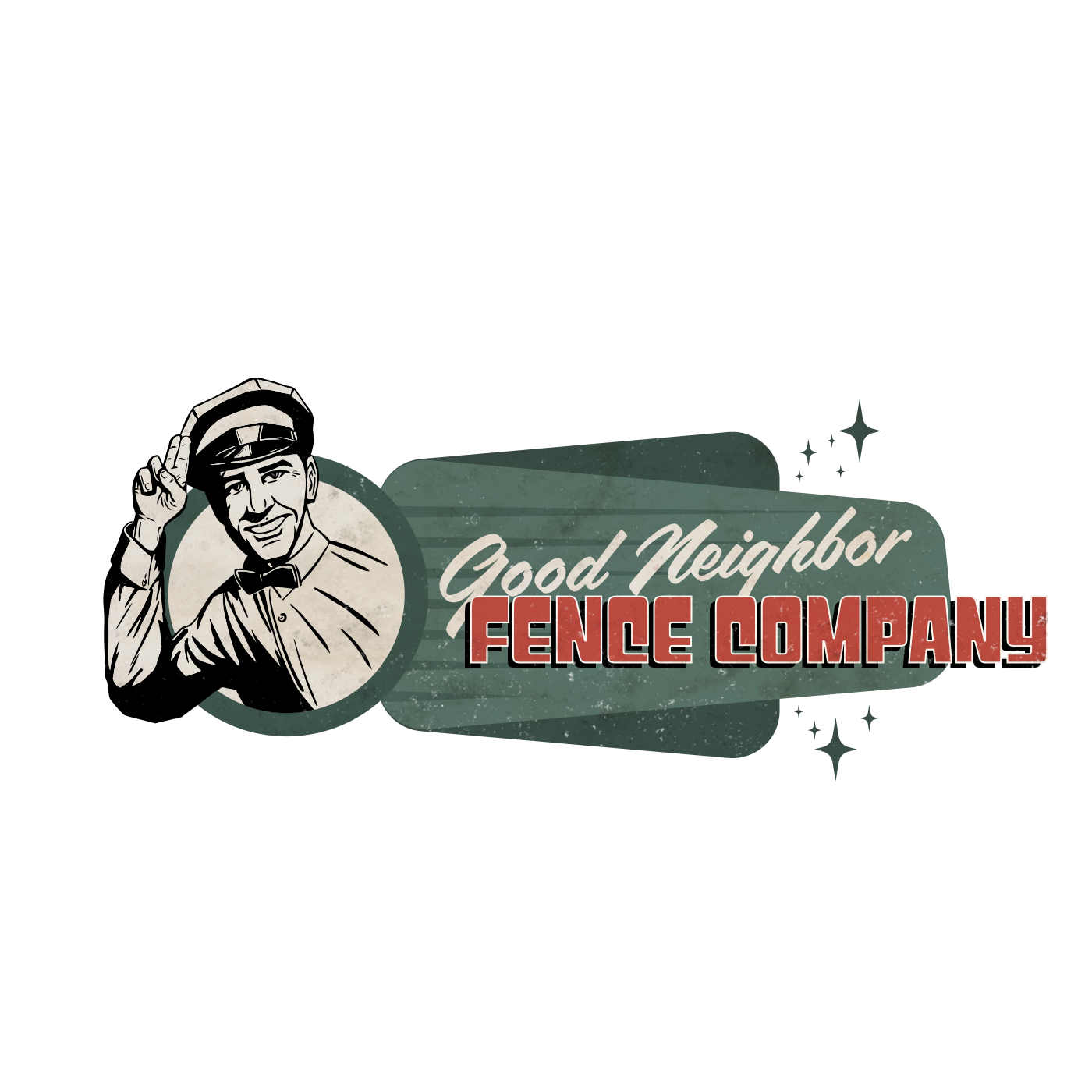Fence Design Plans Guide
Fence Design Plans: Your Next Step in DIY Home Projects
Viewing fence design plans is an excellent choice for your next step in your DIY home projects. If you’re looking to add privacy to your backyard oasis, incorporating plants and a pergola into your fence plan can create a beautiful landscape.
Planning a fence design can seem daunting, but with the right tools and knowledge, it can be an easy project to tackle. Wood fence design plans are popular among homeowners due to their durability and timeless aesthetic. When starting, it’s crucial to consider what purpose you want your fence to serve. Is it for privacy or decoration? Do you have pets that need containment? These questions will help guide you towards the best plan for your yard.
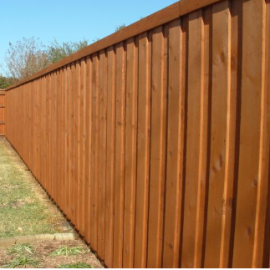
Board on Board Privacy Fence
A board-on-board fence is a type of privacy fence that is constructed with overlapping boards to create a solid barrier between two areas. It is a popular fencing option used in residential and commercial properties to provide privacy, security, and aesthetics.
The construction of a board-on-board fence typically involves placing vertical boards side by side and then attaching overlapping horizontal boards to cover the gaps between the vertical boards. This overlapping pattern creates a seamless and solid barrier that blocks the view from both sides of the fence, making it an ideal choice for privacy purposes.
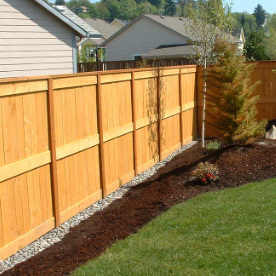
Picture Frame Fence
A picture frame fence is a type of fencing design that typically consists of a border frame made of wood, metal, or other materials, with interior panels or pickets filling the central space. The frame is usually larger and more prominent than the interior panels, creating a “picture frame” effect when viewed from a distance.
Picture frame fences are often used for decorative purposes and can add an aesthetically pleasing element to a yard or outdoor space. They can be used for privacy, security, or simply as a decorative accent. The frame can be designed in various styles, such as square, rectangular, or arched, and can be painted or stained to match the surrounding environment or complement the overall design of the property.

Shadow Box Fence
A shadow box fence, similar in style to a good-neighbor fence, is a type of fence design that provides both privacy and an attractive appearance. It consists of overlapping vertical boards or pickets on both sides of the fence, creating a fence that looks the same from both sides. The overlapping boards alternate on each side of the fence, creating a shadow effect when viewed from an angle.
The key feature of a shadow box fence is that it allows airflow and some visibility through the fence while still providing privacy. This design is achieved by spacing the boards or pickets slightly apart, allowing light to pass through the gaps while obstructing the direct line of sight. What sets it apart from the good neighbor fence is tighter spacing, the top rail, and cedar strips below the top rail.

Dog Eared Privacy Fence
A privacy fence is a type of fence that is designed to provide privacy and security by blocking the view from outside. It is typically taller than other types of fences and is constructed using materials that are not see-through, such as wood, vinyl, metal, or composite materials.
Privacy fences are commonly used in residential settings to create a barrier between neighboring properties, to keep unwanted intruders out, and to provide a sense of seclusion and privacy for homeowners. Privacy fences are often installed around backyards, gardens, pools, or other outdoor areas where privacy is desired. They can come in various styles, including solid panels, lattice, or picket designs, and can be customized to match the aesthetics of the surrounding environment or the homeowner’s preferences.
Things to Keep in Mind
When designing a fence, there are several things to keep in mind. First, determine the location of your property line and any local regulations regarding fencing height or materials. From there, decide on the style of rail or picket placement that suits your taste and needs.
Incorporating plants into your fence design adds dimension and texture while creating a natural barrier between neighbors. Consider climbing vines like ivy or honeysuckle for a classic look or opt for tall grasses like bamboo for added privacy.
A pergola is another great addition to any fence plan as it provides shade and creates an inviting outdoor space. It’s important to ensure the pergola aligns with the overall aesthetic of your yard and doesn’t obstruct any views.
Once you’ve finalized your plan, it’s time to start building! Using a diagram can help make the process smoother by outlining where each piece should go. Remember always to wear protective gear when working with power tools and follow safety guidelines.
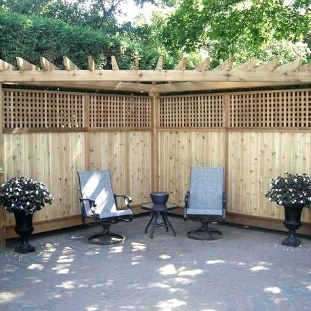
The best fence material for a specific project will depend on factors such as budget, desired aesthetic, and intended use
Choosing the right fence material depends on several factors including budget constraints, desired aesthetic, and intended use. For homeowners on a tight budget, chain link fencing may be the best option. However, for those who want a fence that will enhance the look of their home, vinyl or wooden fencing may be a better choice.
It is also important to consider the intended use of the fence when choosing a material. If privacy and security are top priorities, then a solid wood or vinyl fence may be the best option. However, if visibility is important, then a chain link fence may be more appropriate.
Best Fence Materials
Aluminum is a popular fence material due to its durability and low maintenance
Aluminum fences have become increasingly popular in recent years, thanks to their many benefits. One of the main advantages of aluminum fencing is its durability. Unlike other materials such as wood, aluminum does not rot or rust. This means that it can withstand harsh weather conditions and last for many years without requiring extensive maintenance.
Another benefit of aluminum fencing is that it requires very little maintenance. Unlike wood fences, which need to be painted or stained regularly, aluminum fences do not require any painting or staining. They can simply be cleaned with soap and water to keep them looking new.
In addition to their durability and low maintenance requirements, aluminum fences are also available in a wide variety of styles and colors. This makes them an excellent choice for homeowners who want a fence that will complement the style of their home while providing security and privacy.
Other common fence materials include wood, vinyl, and chain link
While aluminum fencing has many benefits, it may not be the best choice for every homeowner. Other common fence materials include wood, vinyl, and chain link. Each of these materials has its own unique advantages and disadvantages.
Wooden fences are a popular choice for fence design plans because they offer a traditional look that complements many different types of homes. However, wooden fences require regular maintenance in order to prevent rotting or warping.
Vinyl fencing is another popular option for fence design plans because it is durable and requires very little maintenance. It is also available in a wide range of colors and styles to suit any home design.
Chain link fencing is often used for commercial properties or areas where security is a concern. While it may not be the most attractive option, it is extremely durable and provides excellent security at an affordable price point.
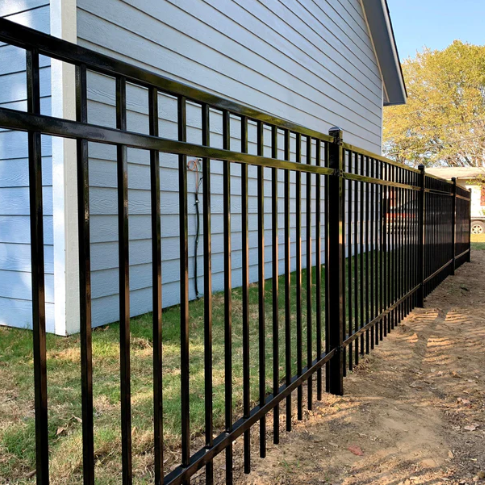
Fence Height
Fence Height: An Important Consideration in Fence Design Plans
When planning a fence design, one of the most important considerations is the height of the fence. The height of a fence depends on its purpose and location. Here are some key points to keep in mind when determining the height of your fence:
Frost Line and Fence Posts
It’s important to set fence posts below the frost line to prevent shifting and damage. The frost line is the depth at which soil freezes during winter. In areas with harsh winters, it’s essential to dig deep enough to avoid any issues with shifting or heaving due to frost. While most Portland residents don’t consider this when they consider all the factors that go into the fence design, it can be a variable. This ensures that your fence stays upright and secure for years to come.
Using a Spirit Level
To ensure that your fence is installed at a consistent height, use a spirit level while building your fence. A spirit level is an inexpensive tool that helps you make sure your posts are straight up and down, so your panels will be level too.
String Line
Using a masonry string line the correct way can help each line of fence panels remain straight. If you use stakes and a string line during the planning of your next fence, you can also use a framing square to guarantee you fence does end up with a zigzag look down the line.
Size of Fence Panels
The size of your fence panels should also be taken into account when determining the height of your fence. Standard panel sizes are six feet wide by eight feet high, but there are other sizes available as well. If you’re using shorter panels, you may need to install more posts or adjust the height accordingly.
Property Lines
When building a fence, it’s important to know where your property lines are located. You don’t want to accidentally build on someone else’s property or have them build on yours without permission! Check with local authorities or surveyors if you’re unsure about where exactly these boundaries lie.
Post Spacing
Another important factor in determining the height of your fence is post spacing. Posts should be spaced evenly along the length of each panel for optimal support and stability. Typically, post spacing ranges from six feet apart for shorter fences up to ten feet apart for larger ones. If your fence has panels with little spacing, you must factor in wind resistance before using rails the extended beyond 8 feet.
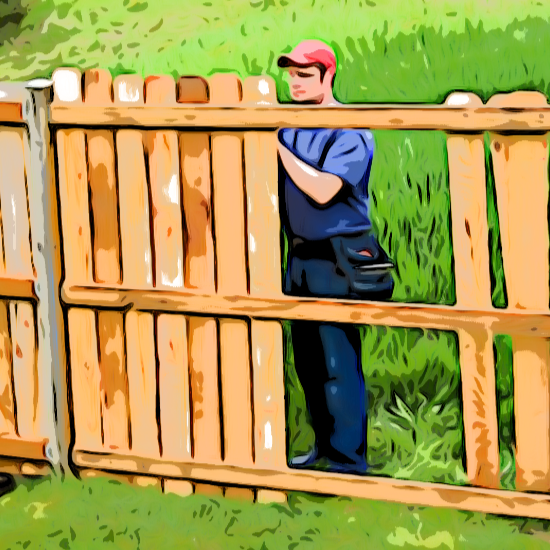
Space Available For Fence Installation
Measure Accurately to Install the Perfect Fence
Before starting any fence installation project, it is essential to measure the space available for the fence accurately. Measuring the space will help determine the exact place where the fence will be installed and how much material you need for your project. The measurements should include both length and height of the fence based on the available space.
When measuring for fence design plans, it’s important to double-check all measurements before purchasing materials or starting construction. It is also crucial to consider any obstacles that may affect your fence design plan, such as trees, rocks, or uneven terrain. Taking accurate measurements can save time, money and ensure that your fence fits perfectly within its intended area.
Why Choose Cedar?
The Benefits of Choosing Redwood for Your Fence
Redwood is an excellent material choice for fences due to its durability and resistance to decay. It’s a popular choice among homeowners because it requires minimal maintenance compared to other types of wood fencing. Redwood fences are also resistant to insects and rotting, which makes them ideal for areas with high moisture levels.
Redwood is a beautiful wood that can be customized to fit any space and design plan. It comes in various colors ranging from light pinkish-brown hues to deep reddish-brown tones that can add warmth and character to your property. Redwood is easy-to-work-with wood which means you can easily cut it into different shapes and sizes.
In Oregon, there are specific rules regarding fences between neighboring properties. According to laws in Oregon, if two adjoining landowners want a partition fence dividing their properties, they should share equally in the cost of building or repairing it unless one party agrees otherwise in writing.
If one neighbor wants a partition fence but the other does not agree or refuses payment towards building it – then they cannot force their neighbor into sharing costs under Oregon law. However, if one neighbor builds a fence entirely on their property without encroaching on their neighbor’s land, they are not required to share the cost of building or maintaining it.
Gates and Access Points
Gates and Access Points: The Essential Components of Any Fence Design Plan
Gates and access points are essential components of any fence design plan. Not only do they provide a functional purpose, but they also impact the overall look and feel of the fence. In this section, we will discuss the importance of gate design, rails and cleats for gate support, privacy fence considerations, and unique options to add a special touch to your fence.
The Impact of Gate Design on Your Fence
The choice of gate design can greatly impact the overall look and feel of your fence. It is important to choose a gate that not only blends well with your fence but also complements the style of your home or property. For example, if you have a modern-style home with clean lines, a simple metal gate may be the best choice. On the other hand, if you have a more traditional-style home with ornate features, a wooden gate with intricate details may be more suitable.
Rails and Cleats for Gate Support
Rails and cleats are essential components for gates as they provide support and ensure proper function over time. Rails are horizontal bars that attach to the posts on either side of the gate while cleats are vertical pieces that attach to both sides of each rail. These components work together to prevent sagging or warping over time due to weather conditions or heavy use. Modern technology has adapted to the common issues from gates of the past. You can now find adjustable gate kits from most local hardware stores.
Privacy Fence Considerations for Gates
Privacy fences may require special consideration it is important to consider where your gates will be placed so that they do not compromise your privacy. Choosing a solid gate design without any holes or gaps is crucial in maintaining privacy.
Unique Options for Your Fence
There are many unique options available when it comes to gates that can add an extra special touch to your fence design plan. Estate gates provide an elegant entranceway while seclusions offer a more private option. Horizon views add a unique touch by providing a view of the surrounding landscape through the gate. Adding caps and end pieces to your fence posts can enhance the overall aesthetic of your fence.
Fencing Regulations and Permits
Height Restrictions, Setback Requirements, and Materials Allowed
Fencing regulations can vary greatly depending on the location. In some areas, there may be height restrictions that dictate how tall a fence can be. These restrictions are often put in place to maintain consistency in the appearance of a neighborhood or to prevent fences from obstructing views. Setback requirements may also be imposed, which determine how far away from the property line a fence must be placed. This is done to ensure that fences don’t encroach on neighboring properties or public spaces.
Another important regulation to consider when planning your fence is the materials allowed for construction. Some areas may have specific rules about what types of materials can be used for fencing, such as wood, vinyl, or metal. It’s important to check with local authorities before beginning any construction to ensure that you’re using approved materials.
Permits for Fence Installation
In many areas, permits are required for fence installation. This is especially true if the fence will exceed a certain height or if it will be located near a property line. The purpose of these permits is to ensure that all fences are constructed safely and according to code. Oregon Fence Laws.
To obtain a permit for your fence installation project, you’ll likely need to submit detailed plans and specifications showing exactly where the fence will be located and how it will be constructed. You may also need to pay fees associated with obtaining the permit.
Shrubbery and Other Landscaping Elements
When planning your fence installation project, it’s important to consider how shrubbery and other landscaping elements may affect your plans. In some cases, these elements may actually be subject to fencing regulations themselves.
For example, shrubs or trees planted too close to a property line could interfere with the placement or visibility of a proposed fence. It’s important to take into account any existing landscaping features when designing your fence so that you can avoid any potential conflicts with local regulations.
Fence Styles and Design Plans
There are numerous options available. The right fence can enhance the look of your property while providing privacy and security. With so many choices, it’s important to consider what you want from your fence.
One classic option is the picket fence for fence design plans. This type of fence is perfect for those who want a traditional look with a touch of charm. Picket fences come in different heights and styles, making them versatile enough to fit any home’s aesthetic.
For those seeking privacy, a solid wood or vinyl fence may be the way to go. These fences provide full coverage and can be customized to fit any height or length needed. They also require minimal maintenance, making them ideal for busy homeowners making fence design plans.
If you’re looking for something more modern, consider a metal or chain-link fence. These fences offer durability and strength while still allowing visibility through the links. They’re great for securing commercial properties or adding an industrial edge to your home.
For those who want a natural look, a living fence made of plants such as hedges or bamboo can provide both beauty and functionality. These fences can be shaped into various designs and sizes while offering privacy and noise reduction. An affordable fencing option when trying to make fence design plans.
No matter which style you choose for fence design plans, it’s important to consider the materials used in construction. Wood is a popular choice due to its affordability and versatility but requires regular maintenance such as staining or painting. Vinyl is another low-maintenance option that provides durability against harsh weather conditions.
